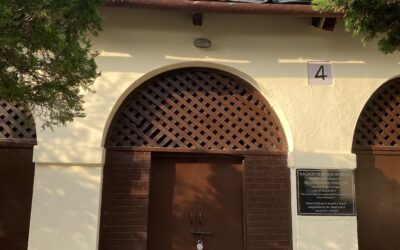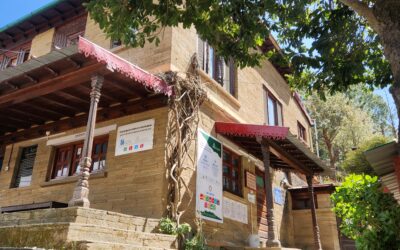It looked like a dream, stayed like an old friend and will be often recalled as the land where most outsiders found bliss, either in nature or in other people and a few, within themselves. Everyone knows Ladakh is heavenly, not just in the way it looks but also how it talks to you. Those who have been there can validate the statement, those who haven’t, have taken it on the face value to put it on their list of dream destinations with seventeen more names.
As Elisabeth Kübler-Ross has said it about people, I believe it holds true for the places too:
“The most beautiful ones we have known are those who have known defeat, known suffering, known struggle, known loss, and have found their way out of the depths. They have an appreciation, sensitivity, and an understanding of life that fills them with compassion, gentleness, and a deep loving concern. Beautiful people do not just happen.”
Sit with an old Ladakhi, talk to them about their childhood or even of youth, and they will narrate stories of suffering and struggles followed by those of love and compassion. With wrinkled faces, glittering eyes and warmest smiles, they will tell it was extreme weather, not the lack of money or gender bias that didn’t let them go to school.

They told me how society made its distinct rules and came up with its own inventions (provoked by necessity) because what worked in the rest of the country, or world, wouldn’t work there. They told unique tales of surviving in this exceptional ecosystem. Some common practices I repeatedly heard include:
- Constructing houses with mud and wood adopting rammed earth system, to trap the heat in winters and keep it cool in summers.
- Laying water pipelines underground so that they don’t freeze or get burst when exposed.
- Storing vegetables like potatoes, carrot in underground pits and vegetable cellars to increase their shelf life for up to 6 months when fresh fruits and vegetables won’t be accessible.
- Making use of waste, even human excreta as manure in fields.
What they may find trivial to mention in initial interactions, are forthright facts like these:
- Mobility remains an issue. In winters, it’s easier to fly to Delhi than to visit a village high up.
- The quality of education may have improved over the years but their children are still choosing to either drop out or move away after high school.
- Five decades ago, there were 10 yaks per person. Now, it’s the other way round.
- Army and tourism have given a plenty of jobs in exchange of a slice of innocence. (If given a choice, would they trade it back? Maybe, not!)
As we land in Ladakh, we see it full of tourists flocking mostly in Leh, a town that we may think has sprung up because of our graciousness. What would happen to poor vendors, craft sellers, restaurants owners, bike rental shops and travel agents if not for us! Abundance of self importance, don’t you think? They are there for us, not vice-versa. As a back-up, they can go back to their farms or to college, move their café to Goa or shift their shops to Jammu. But, what would we do if mountains call us (bleh!) to check off Ladakh from that list. Who would assist us with our frenzies on a daily basis?

The locals call us Indians (and refer themselves as Ladakhis) but if that makes us angry, a bigger question to ask is, whether we (and our government) ignored them first. How many of us had heard of this region before ‘3 idiots’? I hadn’t. Even now, do we even recognize it as a place beyond a holiday spot to boast about, on social media and asocial meet-ups. Who am I to tell them to stay in their ancestral homes and preserve their spaces, culture and lifestyles when I have come from 800 miles away, have been wandering in distant lands all my life, not knowing what grows in my neighborhood, what occupation my great grandfather was in or how the folk music of my state sounds like.
This was my 2nd time in Ladakh. Unlike first, I didn’t rush to click pictures at every chance to capture all those peaks and valleys I may never see again.
A valley, whose inhabitants largely practice terrace farming,
a valley that’s as green as it’s brown,
a valley that often experiences four hours of fierce sun and forty minutes of snow in the same day!
It was easy to love the landscape with snow-capped mountains behind tall green poplar trees, identical two-floor houses scattered across fields and Yaks grazing in the left corner. But, what’s there to love about blocked roads, unsteady jobs, constant water shortage, tomatoes being luxury and peculiar health problems. The locals have lived with such adversities (and many more) for generations. I couldn’t afford to be someone who points out that they don’t appreciate this “Paradise” enough when I’ve been there only for ten days in the most favorable climate conditions, demanding hot showers and soft mattresses for a comfortable stay.
It didn’t dishearten me when my camera and phone said “Battery exhausted” because this time, the images were etched in eyes and head, which will now be put in words to be revisited often.




Beautiful Article Swati !!
Thanks 🙂
“Who am I to tell them to stay in their ancestral homes and preserve their spaces, culture and lifestyles when I have come from 800 miles away, have been wandering in distant lands all my life, not knowing what grows in my neighborhood, what occupation my great grandfather was in or how the folk music of my state sounds like.”
•••••
I can totally relate to this, and I’m pretty sure we are not the only ones!! Thank you for sharing these thoughts of yours…speaks volumes about the traveler in you!!😊👍
Thanks Divas. Glad you read the post and found it relatable 🙂